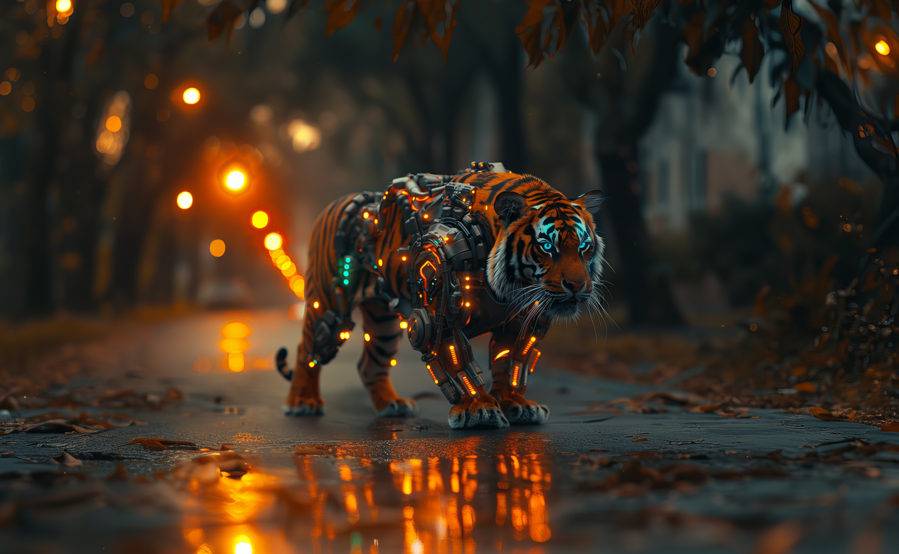The popularity of AI Brainrot Animals is growing quickly on social media sites like Instagram and TikTok. Millions have taken notice of these strange, fantastical creatures that were created by combining generative AI tools with internet humor. Their ridiculous looks, which frequently combine animals with commonplace objects, food items, and even weapons, have become extremely popular on the internet. These inventions, which range from frogs with human legs to sharks sporting Nike sneakers, are both eerie and hilariously funny. These characters have gone viral because of their utter unpredictable nature, which combines the classic surrealist elements with the internet’s penchant for absurdity.
The idea of “Italian Brainrot,” a meme culture that blends absurd characters with an Italian aesthetic, was linked to the initial wave of this trend. Early figures such as the three-legged shark Tralalero Tralala captivated the public’s attention and swiftly became emblematic of the genre. They were followed by more ridiculous AI-generated creatures. Absurdity reached new heights with Bombardillo Crocodillo, a cross between a crocodile and a bomber plane. An AI-generated voiceover, usually in an exaggerated Italian accent, is frequently used to accompany each of these creatures, adding to the absurdity with illogical and frequently humorous narration. Brands and content producers are using these characters for their own marketing, and what started out as a quirky, niche meme has now grown into a full-fledged viral sensation.
| Character Name | Description | First Appearance | Creator/Origin Platform | Notable Features |
|---|---|---|---|---|
| Tralalero Tralala | A three-legged shark with Nike sneakers | January 2025 | TikTok (@eZburger401) | Iconic for its weird behavior and strange popularity |
| Bombardillo Crocodillo | A hybrid of a crocodile and a bomber plane | February 2025 | TikTok (@noxaasht) | A military-themed absurdity |
| Boneca Ambalabu | An anthropomorphic frog-tire hybrid with human legs | February 2025 | TikTok (@noxaasht) | Represents a fusion of animal, human, and mechanical parts |
| Ballerina Cappuccina | A ballerina with a cappuccino cup as a head | March 2025 | TikTok | An elegant yet absurd juxtaposition of classical dance and everyday objects |
| Tung Tung Tung Sahur | A wooden club with a baseball bat | March 2025 | TikTok | Indonesian meme based on the sound used for Suhur during Ramadan |
AI Brainrot Animals are notable for their subversion of artistic and cultural conventions in addition to their fantastical imagery. At first look, they might appear to be straightforward, lighthearted absurdities, but in reality, they reflect a larger change in the way AI is being incorporated into popular culture. The characters serve as a perfect illustration of how the distinction between machine-generated content and human creativity is becoming increasingly hazy. By experimenting with new forms of humor, visual art, and digital storytelling, these hybrid creatures demonstrate how AI tools can be used to push the limits of what is deemed “funny” or “artistic.”

But beyond just being funny, AI Brainrot Animals has provoked a more in-depth discussion about generative AI’s place in content production. With the development of more sophisticated tools like DALL-E and MidJourney, artists can now produce intricate, detailed imagery with a single click. Though it also raises concerns about authorship and the implications of AI-driven art, this capability has created new opportunities for creative expression. Who is the owner of a character created by AI? Do machines deserve to be regarded as independent “artists”? As AI tools become more prevalent in creative industries like graphic design and filmmaking, these questions become more pertinent.
As these AI innovations become more widely accepted, questions are also raised about how they might affect society. Due to their contentious nature, some of the characters—such as Bombardillo Crocodillo and Tralalero Tralala—have drawn criticism. For instance, Bombardillo Crocodillo has generated discussions regarding the depiction of violence and geopolitical conflicts, while Tralalero Tralala has been charged with advancing Islamophobic themes. In this new digital environment, it has become more challenging to draw the boundaries between humor, satire, and insensitivity. Notwithstanding these debates, AI Brainrot Animals have unquestionably become a part of online culture, reflecting the quickly evolving landscape of humor, technology, and creativity in the digital age.
There is constant debate about AI’s role in creative environments. Although AI-generated content is not new, this issue has gained attention due to AI Brainrot Animals’ viral success. These animals serve as a powerful illustration of how artificial intelligence (AI) can unexpectedly and occasionally unnervingly combine traditional artistic forms with online culture. AI’s impact on the creative industries is only anticipated to increase as it develops further, giving rise to fresh forms of expression, entertainment, and art that go against our preconceived ideas about what creativity is.
| AI Tool | Description | Notable Capabilities | Use Cases |
|---|---|---|---|
| DALL-E | An image generation tool by OpenAI | Creates detailed, surreal images from text prompts | Digital art, memes, marketing visuals |
| MidJourney | A generative AI for artistic content | Specializes in creating high-quality, imaginative artwork | Concept art, album covers, web design |
| Artbreeder | AI tool for collaborative art creation | Allows users to create and evolve images collaboratively | Portraits, landscape design, character creation |
The increasing popularity of generative AI as a tool for commentary and comedy is demonstrated by the existence of AI Brainrot Animals on websites such as TikTok. By representing the nexus of creativity, technology, and online culture, these strange, hybrid creatures have evolved beyond their beginnings as niche memes to become emblems of the digital age. Creators can push the limits of conventional art forms by using AI to produce characters and stories that are both thought-provoking and hilariously ridiculous.
It’s obvious that AI will continue to be a major factor in the production of viral content in the future. A generation that thrives on fast-paced, highly shareable content has found that the combination of AI-driven humor and internet memes is especially effective. We can anticipate even more inventive and strange creations to surface as AI tools’ capabilities grow, further influencing the direction of digital expression and entertainment in the future. Characters like Tralalero Tralala may soon turn what began as a quirky trend into a long-lasting movement that affects not only how we consume media but also how we view humor, art, and technology in the digital age.
